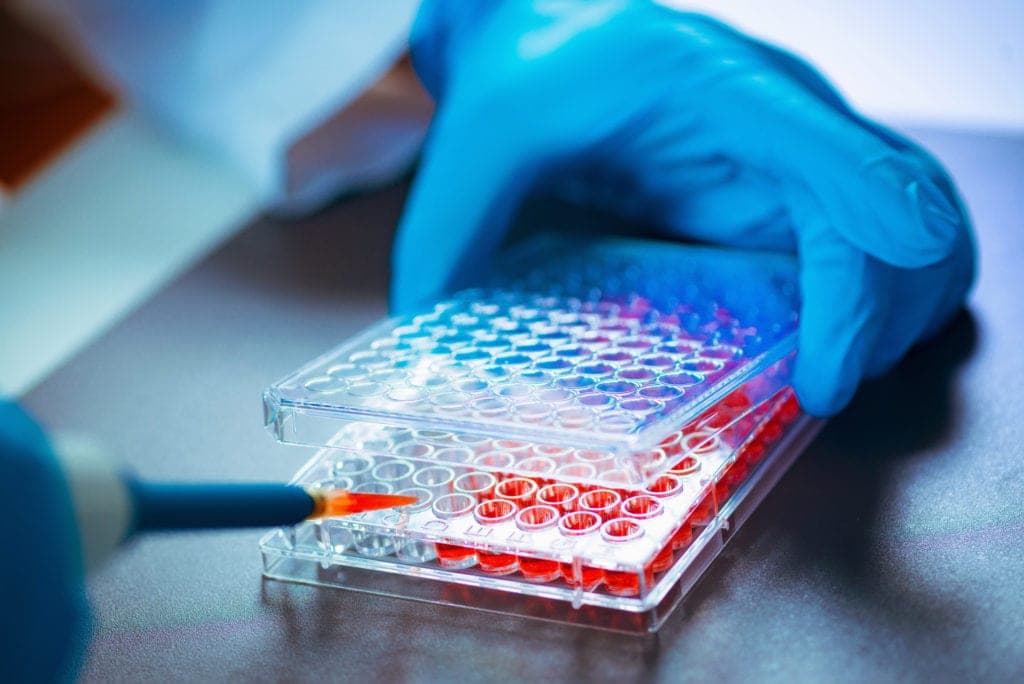Nanomedicine is a revolutionary field of medical science that has the potential to revolutionize the way we treat and diagnose illnesses. This field of medicine combines the use of nanotechnology with traditional medicine to create treatments and diagnostic tools that are more effective and accurate than ever before. Nanomedicine has the potential to revolutionize the way we treat diseases, and it is a rapidly growing field of research.
The basic concept of nanomedicine is to use microscopic particles or nanomaterials to diagnose and treat diseases. Nanomaterials are incredibly small particles that have unique properties which can be used to target specific cells or tissues in the body. Nanoparticles can also be used to deliver drugs or other treatments directly to the affected area, making them much more effective than traditional treatments.
Nanomedicine is being used in many different areas of medicine, from cancer treatment to wound healing. In cancer treatment, nanoparticles can be used to deliver drugs directly to cancer cells, while in wound healing they can be used to stimulate tissue regeneration. In addition, nanomaterials are being used to develop new diagnostic tools, such as nanoparticles that can detect the presence of certain proteins or molecules in the body. These tools can help doctors diagnose illnesses much more quickly and accurately than ever before.
In addition, nanomedicine is being used to develop new treatments for a variety of illnesses. For example, nanomaterials are being used to create targeted drug delivery systems that can deliver drugs directly to specific areas of the body. These systems can be used to treat diseases such as cancer, HIV/AIDS, and Alzheimer’s disease. In addition, nanomaterials are being used to create artificial organs and tissues, which could potentially be used to replace damaged or diseased organs in the body.
Nanomedicine has tremendous potential for improving the diagnosis and treatment of illnesses, and it is a rapidly growing field of research. The possibilities for this field are endless, and scientists are working hard to explore all of its potential applications. From cancer treatments to artificial organs, nanomedicine has the potential to revolutionize the way we treat diseases and improve our overall health.
Advances in Nanomedicine: The Future of Medicine
Nanomedicine is a rapidly emerging field of medicine that focuses on the use of nanotechnology to diagnose, treat, and prevent disease. It is a field of research that has been gaining momentum over the past decade, and shows great promise for the future of medicine. With nanotechnology, scientists are able to manipulate matter at the atomic and molecular level, allowing for the development of new treatments and therapies that are tailored to a patient’s individual needs.
Nanomedicine can be used in a variety of ways. One of the most promising areas of research is in cancer treatment. Nanoparticles can be used to deliver drugs directly to tumor cells, reducing the amount of damage done to healthy cells and increasing the effectiveness of the treatment. Additionally, nanosensors can be used to detect cancer cells in their earliest stages, allowing for earlier diagnosis and more effective treatments.
Another area where nanomedicine could have a major impact is in diagnostics. Nanosensors can detect biomarkers in the bloodstream, which can provide valuable information about a patient’s health. This could allow doctors to diagnose diseases faster and more accurately than ever before. Additionally, nanosensors can be used to monitor a patient’s health over time, giving doctors real-time data about their condition.
Nanomedicine also has potential applications in drug delivery. Nanoparticles can be used to deliver drugs directly to specific parts of the body, allowing for more precise dosing and greater efficacy. Additionally, nanoparticles can be used to target specific cells or tissues within the body, making drug delivery more precise and efficient.
Finally, nanomedicine could revolutionize medical imaging. Nanosensors could be used to create detailed images of organs and tissues at a cellular level, allowing for early detection of disease and providing better information for diagnosis and treatment. Additionally, nanosensors could be used to create 3D images of organs and tissues that provide even more detail than traditional imaging methods.
Overall, nanomedicine offers great potential for improving medical care in the future. It has the potential to revolutionize cancer treatment, diagnostics, drug delivery, and medical imaging. Nanomedicine could lead to earlier detection and diagnosis of diseases, more effective treatments, and better outcomes for patients. As research in this field continues to advance, it is likely that nanomedicine will become an increasingly important part of modern medicine in the years to come.
What is Nanomedicine and How Can it Help?

Nanomedicine is a rapidly developing field of medicine that uses nanotechnology to diagnose, treat and prevent diseases. This new technology has the potential to revolutionize healthcare, with its ability to target specific cells and molecules in the body, as well as its ability to deliver drugs and other treatments directly to the site of disease.
Nanomedicine is based on the idea of manipulating matter on the nanoscale, which is the scale of atoms and molecules. This enables scientists to design particles and devices that are much smaller than any cell in the human body, but still able to interact with them. These particles can be used to detect and diagnose diseases, deliver drugs or other treatments directly to cells, or even repair damaged tissue.
Nanomedicine has a wide range of potential applications, including diagnosing and treating cancer, cardiovascular disease, neurological disorders, infectious diseases and genetic disorders. For example, nanoparticles can be used to detect cancer cells in the body before they become visible with traditional imaging techniques, allowing for earlier diagnosis and treatment. Nanoparticles can also be used to deliver drugs or other treatments directly to cancer cells, bypassing healthy tissue and reducing side effects.
Nanomedicine also has potential applications in regenerative medicine. Nanoparticles can be used to deliver growth factors or stem cells directly to damaged tissue, which could potentially help to regenerate organs or tissues. This could have implications for treating conditions such as diabetes, heart disease and spinal cord injury.
Nanomedicine is still in its early stages, but it has the potential to revolutionize healthcare and significantly improve patient outcomes. It could help diagnose and treat diseases earlier, as well as improve drug delivery and reduce side effects. It could also be used in regenerative medicine to help repair damaged tissue or organs. With further research and development, nanomedicine could become an integral part of modern healthcare in the future.
Nanomedicine: A Revolution in Healthcare
Nanomedicine is a rapidly growing field of research that has the potential to revolutionize healthcare. This revolutionary technology involves the use of nanoscale particles, such as nanorobots, to detect, diagnose, and treat diseases at a cellular level. Nanomedicine has the potential to revolutionize healthcare by providing more accurate diagnoses, treatments that target specific cells, and improved delivery of drugs.
The use of nanorobots in medicine is still in its infancy, but the potential applications are vast. Nanorobots can be designed to detect specific molecules in the body and provide targeted treatments. For example, nanorobots could be used to detect cancerous cells and deliver targeted therapies that would destroy only those cells without damaging healthy tissue. Nanorobots could also be used to deliver drugs directly to specific sites within the body, improving the effectiveness of treatments.
Nanomedicine could also revolutionize the way we diagnose diseases. By using nanorobots to detect small molecules or cells, doctors could diagnose diseases much earlier than is currently possible. This early detection would enable doctors to begin treatment earlier and could potentially save lives.
In addition to diagnosing and treating diseases, nanomedicine has the potential to improve our overall health by preventing disease before it occurs. Nanorobots could be used to monitor our bodies for signs of disease and alert us before symptoms appear. This could enable us to take preventive measures such as changing our diet or lifestyle habits before the disease progresses.
Nanomedicine is still in its early stages, but the potential applications are incredibly exciting. As research continues, nanomedicine may revolutionize the way we diagnose and treat diseases, ultimately leading to improved health outcomes for all.
Applications of Nanomedicine for Cancer Treatments
Nanomedicine is an emerging field that has the potential to revolutionize cancer treatments. It is a type of medicine that uses nanotechnology to diagnose and treat diseases, including cancer. It has the potential to reduce the side effects of chemotherapy and radiation therapy, as well as improve the effectiveness of cancer treatments.
Nanomedicine is based on the idea of using tiny particles, called nanoparticles, to target and treat cancer cells. The particles can be engineered to carry drugs or other therapeutic agents directly to cancer cells, while avoiding healthy cells. This makes it possible to deliver high doses of drugs and other agents directly to tumors, while minimizing the side effects of traditional treatments.
Nanoparticles can also be used to detect cancer in its early stages. They can be engineered with markers that bind to cancer cells, allowing them to be detected with imaging techniques such as MRI or CT scans. This allows doctors to diagnose cancer earlier, when it is easier to treat.
Nanomedicine also has the potential to improve existing treatments. For example, nanoparticles can be used to deliver chemotherapy drugs directly to tumors, allowing for more targeted treatment and reducing side effects. Nanoparticles can also be used to deliver radiation directly to tumors, allowing for more precise treatment with fewer side effects.
In addition, nanomedicine has the potential to develop new treatments that are not possible with traditional therapies. For example, nanomedicine can be used to develop targeted therapies that act on specific molecules or pathways within cancer cells. This could allow for more personalized treatments that are tailored to each patient’s individual tumor.
Nanomedicine is still in its early stages and much work needs to be done before it can be used in clinical practice. But the potential for nanomedicine to revolutionize cancer treatments is real and exciting. In the future, nanomedicine could provide better outcomes for patients with cancer and improve their quality of life.
Harnessing the Power of Nanotechnology for Health Care
Nanotechnology is a rapidly growing field of science that has the potential to revolutionize the healthcare industry. Nanotechnology, which involves manipulating matter at the atomic or molecular scale, has the potential to create new materials, devices, and systems that are far more efficient and effective than existing technologies. The application of nanotechnology in healthcare has been identified as a key factor in improving patient outcomes and reducing healthcare costs.
The use of nanotechnology in healthcare can be divided into two main categories: medical devices and drug delivery systems. Medical devices are used to diagnose and treat diseases, while drug delivery systems are used to deliver drugs to specific sites in the body. In both cases, nanotechnology can be used to improve the efficiency and effectiveness of these devices and systems. For example, nanoscale particles can be used to increase the surface area of medical devices, allowing them to be more effective at detecting and treating diseases. Similarly, nanoscale particles can be used to increase the potency of drugs, making them more effective at delivering therapeutic benefits.
In addition to medical devices and drug delivery systems, nanotechnology can also be used to develop new materials and systems for use in the healthcare industry. For example, researchers are exploring the potential of using nanostructures to create new types of tissue scaffolds, which could be used to support and promote the growth of healthy cells. Similarly, nanotechnology can also be used to create sensors that can detect changes in biochemical processes within the body, which could be used to monitor patients more effectively.
The potential of nanotechnology in healthcare is immense. By harnessing the power of nanotechnology, researchers are able to develop new materials, devices, and systems that can be used to improve patient outcomes and reduce healthcare costs. As research into nanotechnology continues to progress, it is likely that we will see even greater applications of this technology in the future. With continued advances in the field of nanotechnology, it is possible that we could see a revolution in healthcare in the coming years.
Using Nanomedicine to Improve Diagnosis and Treatment Outcomes
Nanomedicine has revolutionized the healthcare industry in recent years. Nanomedicine is the use of nanotechnology to improve diagnosis and treatment outcomes. It involves the use of tiny particles, usually less than 100 nanometers in size, to diagnose and treat diseases. Nanoparticles can be engineered to interact with cells and molecules in ways that conventional drugs and treatments cannot, allowing for more accurate diagnosis and targeted treatments.
Nanomedicine has been used in a variety of applications, from the diagnosis of cancer and other diseases to drug delivery and gene therapy. In diagnosis, nanomedicine can be used to detect the presence of specific molecules or pathogens in the body. For example, nanoparticles can be used to detect cancer biomarkers in blood or tissue samples. This allows for earlier diagnosis and more accurate prognosis of the disease. In addition, nanomedicine can be used to image organs and tissues, allowing doctors to identify and monitor diseases at a cellular level.
In drug delivery, nanomedicine can be used to deliver drugs directly to their target sites in the body. Nanoparticles can be designed to bind with specific molecules or cells and deliver drugs to them directly, avoiding many of the side effects associated with traditional drug delivery methods. This also allows for more precise dosing of drugs, which can lead to better therapeutic outcomes.
Gene therapy is another area where nanomedicine has been successfully employed. Gene therapy uses engineered nanoparticles to deliver genetic material directly into cells. This allows for the correction of genetic defects or the introduction of new genes, which can be beneficial for treating genetic disorders. Gene therapy using nanomedicine is still in its early stages, but it has shown promise as a potential treatment for some diseases.
Nanomedicine has also been used to create targeted therapies for cancer and other diseases. By designing nanoparticles that specifically bind to cancer cells, researchers have been able to deliver drugs directly to tumor sites without damaging healthy cells. This has allowed for more targeted treatments that are less toxic and have fewer side effects than traditional treatments.
Overall, nanomedicine has revolutionized healthcare by providing more precise diagnoses and treatments for a variety of diseases. Nanoparticles can be designed to interact with cells and molecules in ways that conventional treatments cannot, allowing for more targeted therapies with fewer side effects. In addition, nanomedicine has enabled gene therapy and other novel treatments that were not possible before its development. As nanomedicine continues to advance, it is likely that it will continue to improve diagnosis and treatment outcomes for many diseases in the future.







